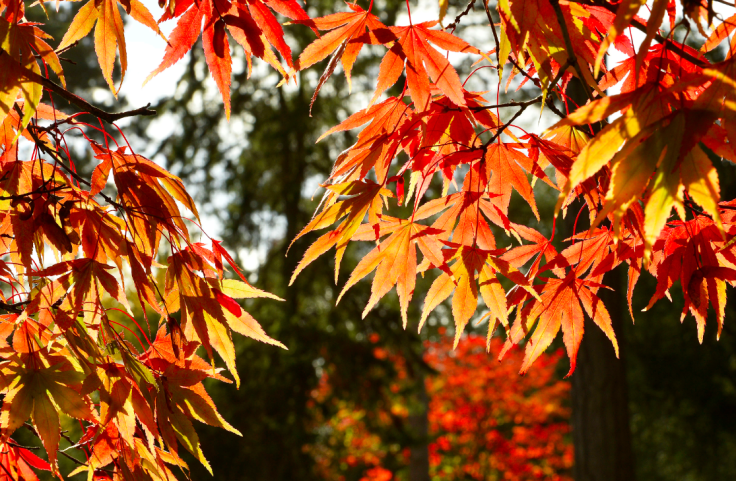When Does Fall Start In 2017? Facts For Beginning Of Autumn

The time of year that John Keats called the "Season of mist and mellow fruitful," autumn is considered to be a season for harvest and is known for turning leaves, cooling temperatures, and also referred to as "fall" in the United States.
In the northern hemisphere, the season of fall begins with the autumnal equinox that falls on Friday, Sept. 22, 2017, at 16:02 EDT. The equinox, when autumn is officially said to begin, is defined as when day and night have the same length, approximately 12 hours each.
With the beginning of autumn, summer will be officially over, but don't fret because fall also means all exciting things like Halloween, Thanksgiving, pumpkin spice lattes, chunky sweaters, cooler temperatures, and vibrant leaves.
MN DNR predicts ‘near-perfect’ fall color season - https://t.co/EwoFGD4VkO - and launches a website to find fall color pic.twitter.com/R0pDfGXht6
— Pioneer Press (@PioneerPress) September 10, 2017
The major signs of fall beginning include the turning of leaves on deciduous trees from their signature color green to varied hues of orange, red, purple, and yellow that makes the season a popular time photography, both for professionals and amateurs.
As you await the start of the season, here are 10 interesting facts about autumn:
British people like to call the season "autumn," according to Grammarist. "Fall," which is mostly used in the United States, is an abbreviation of the term "fall of the leaf."
Research has shown in the past years that babies, who are born in autumn are more likely to survive until the age of 100 years than babies born during the rest of the year. A study in the Journal of Aging Research also found that 30 percent of centenarians in the country born during 1880-1895 were born in the months of autumn.
The full moon which occurs closest to the autumn equinox is also known as a "harvest moon."
Usually, the Autumn equinox falls on either Sept. 22 or 23, but not quite always. Because the Gregorian calender, which decides this, is not quite in perfect symmetry with the earth's orbit and therefore the Autumn Equinox sometimes falls on Sept. 24. This phenomenon took place in 1931 and is expected to happen next in 2303, according to Metoffice.gov.uk, United Kingdom's national weather service.
Urban legend has it that you can balance an egg on its top or bottom during the equinox, according to Snopes. Eggs being one of the most ubiquitous symbols of fertility and birth have been always associated with the start of spring, and thus also with the equinox.
In Greek mythology, autumn's beginning was associated with the time when Persephone was abducted by Hades to become the Queen of the Underworld. In response to the abduction Persephone's mother, Demeter (the goddess of the harvest), left all the crops on earth to die until her daughter was returned, thus marking Spring.
NASA calls autumn "aurora season" because it experiences more geomagnetic storms, which in turn permit people to spot the Northern Lights during that time.
Fall in Australia lasts from March to May unlike in the United States where it is in September.
Almost 30 percent of Americans said that their favorite season is fall, according to a YouGov survey in 2013.
New England earns about $3 billion from tourists traveling to see the colorful leaves, the Associated Press reported. While New Hampshire is said to see about 8 million visitors a year alone.
However, everyone does not see the season as joyous or fit for celebrations. As Ernest Hemingway wrote in A Moveable Feast, "You expected to be sad in the fall. Part of you died each year when the leaves fell from the trees and their branches were bare against the wind and the cold, wintery light."
© Copyright IBTimes 2024. All rights reserved.





















